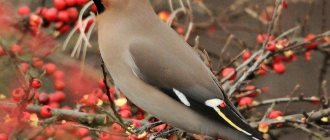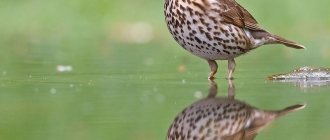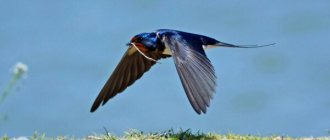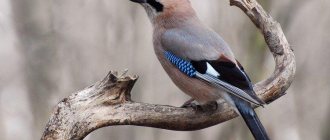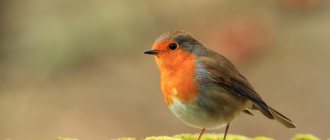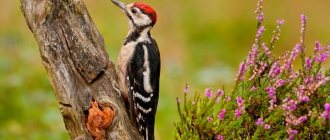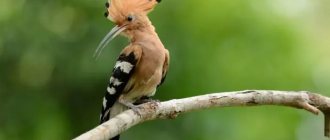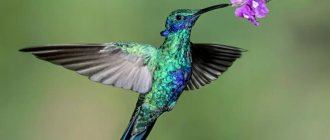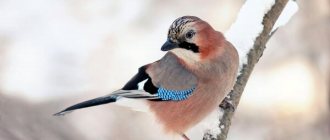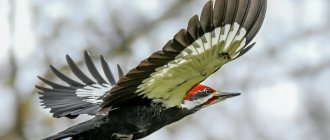- Wild animals
- >>
- Birds
Swifts live in small groups. There are about 100 species, usually grouped into two subfamilies and four tribes. This is the fastest bird in the world, characterized by its dependence on weather conditions. Swift is created for air and freedom. They are found on all continents, with the exception of Antarctica and distant islands, where they have not yet been able to reach. In European folklore, swifts were known as "Devil's Birds" - probably because they are inaccessible and, like owls, they attract more attention.
Origin of the species and description
Photo: Swift
The swift is medium in size, similar in appearance to a swallow, but a little larger. The similarities between these groups are due to convergent evolution, reflecting similar life styles based on catching insects in flight. However, their paths diverged in the distant past. Their closest relatives are New World hummingbirds. The ancients considered them a swallow without legs. The scientific name Apus comes from the ancient Greek α - “without” and πούς - “leg”. The tradition of depicting swifts without legs continued into the Middle Ages, as can be seen from heraldic depictions.
Fun Fact: Swift taxonomy is complex, with genus and species boundaries often disputed. Analysis of behavior and vocalizations is complicated by overall parallel evolution, while analysis of various morphological characters and DNA sequences has yielded ambiguous and partially contradictory results.
The common swift was one of the species described by the Swedish naturalist Carl Linnaeus in 1758 in the tenth edition of his work Systema Naturae. He introduced the binomial name Hirundo apus. The current genus Apus was formed by the Italian naturalist Giovanni Antonio Scopoli in 1777. The predecessor of the Central European subspecies, which lived during the last Ice Age, was described as Apus palapus.
Swifts have very short legs, which are used primarily for grasping vertical surfaces. They never voluntarily land on the ground where they might be in a vulnerable position. During non-breeding periods, some individuals can spend up to ten months in continuous flight.
Appearance and features
Photo: Swift in flight
Swifts have a length of 16 to 17 cm and a wingspan of 42 to 48 cm, depending on the age of the specimen. They are black and brown except for the chin and throat, which can be white to cream in color. In addition, the upper part of the flight feathers is pale brown-black compared to the rest of the body. Swifts can also be identified by their moderately forked tail feathers, narrow sickle-shaped wings, and their high-pitched calling sounds. They are often mistaken for swallows. The swift is larger, has a completely different wing shape and flight diagonal than the swallows.
All species in the family Apodidae (swifts) have unique morphological characteristics, a lateral "grasping foot" in which toes one and two oppose toes three and four. This allows regular clippers to attach to areas such as stone walls, chimneys and other vertical surfaces that are inaccessible to other birds. Males and females look the same.
Video: Swift
Individuals show no seasonal or geographic changes. However, it is possible to distinguish juveniles from adults by slight differences in color intensity and uniformity, as juveniles are usually blacker in color, have white-fringed forehead feathers, and a white patch under the beak. These differences are best observed at close range. They have a short forked tail and very long drooping wings that resemble a crescent moon.
Swifts produce a loud call in two different tones, the highest of which comes from the females. They often form "screaming parties" on summer evenings when 10-20 individuals gather in flight around their nesting site. Large screaming groups form at high altitudes, especially at the end of the breeding season. The purpose of these parties is unclear.
Answers to pages 20 - 22
1. Thawed patches Fill in the missing words. What words convey comfort and warmth? How does the author write about this? Emphasize.
The little haircut hatched from an egg in a dark hole and squeaked in surprise. Nothing was visible. Only a speck of light dimly flickered far, far away. The little haircut was frightened by this light and clung closer to the warm and soft mother-haircut. She pressed his wing to her. He dozed off, basking under the wing.
2. Search What rules did Skrip learn, what did he understand? What did his mother teach him? Find the answers and underline them.
And the mother-haircut gave the second drop not to him, but to another haircut. It's a shame. The short-haired little Skrip fell silent and became angry with his mother and brothers and sisters, who, it turned out, were also hungry. When mom brought the midge and gave it to another little one, Skrip tried to take it away. Then the mother-haircut hit Creak on the head with her beak so much that he lost all desire to take food from others. The little haircut realized how serious and strict their mother was. You can't pity her with a squeak.
3. Diagram How many enemies do little swifts have? Fill out the diagram.
Enemies of swifts: boys, falcon, crow, viper, kite.
4. Search How did Skrip live without his mother? Who helped the haircuts? Find and underline the answers.
But Skrip didn’t yet know how friendly the swifts are! At night, the leader, White Belly, dived towards them, tickled the chicks with his beak, hugged them with his wings, and they warmed up and fell asleep. And when it dawned, a neighbor’s shearer came to Skrip’s hole and brought a large mosquito. Then more swifts and swifts flew in and brought food and drops of water. And at night, the leader White Belly again flew to the orphaned shorthairs.
5. Scheme Who did Skrip have to communicate with? Fill out the diagram. Write down what feelings Skrip experienced while communicating with these characters.
6. Exact word Re-read the last episode of the story. What do swifts give people? What words contain sadness? Hope? Emphasize.
- Goodbye, Creak! Goodbye! Fly to your hole! - the fishermen shouted after Skrip. Swifts fly away overnight and take summer with them. They also arrive in one night and bring summer with them. It's boring without swifts on the river. Something is missing. Where are you, little Creak? In what regions and countries? Come back soon! Bring summer to us on your wings!
Answers to assignments. Literary reading. Workbook No. 2. 3rd grade. Efrosinina L. A.
V.P. Astafiev. Strizhonok Skrip 4.4 (88.71%) from 209 voters
Where does the swift live?
Photo: Swift bird
Swifts live on all continents except Antarctica, but not in the far north, large deserts or oceanic islands. Common swifts (Apus apus) can be found in almost every region from Western Europe to East Asia and from northern Scandinavia and Siberia to North Africa, the Himalayas and central China. They live throughout this range during the breeding season and then migrate for the winter months to southern Africa, from Zaire and Tanzania south to Zimbabwe and Mozambique. The summer distribution range extends from Portugal and Ireland in the west to China and Siberia in the east.
They breed in countries such as:
- Portugal;
- Spain;
- Ireland;
- England;
- Morocco;
- Algeria;
- Israel;
- Lebanon;
- Belgium;
- Georgia;
- Syria;
- Türkiye;
- Russia;
- Norway;
- Armenia;
- Finland;
- Ukraine;
- France;
- Germany and other European countries.
Common swifts do not breed on the Indian subcontinent. Most nesting habitat is located in temperate zones where there are suitable trees for nesting and sufficient open space in which to gather food. However, the habitat of swifts becomes tropical for several months after migrating to Africa. These birds prefer areas with trees or buildings with open spaces, as they are able to use vertical surfaces such as stone walls and pipes due to a unique physical adaptation.
Notes
- Boehme R. L., Flint V. E.
Five-language dictionary of animal names. Birds. Latin, Russian, English, German, French / Under the general editorship of academician. V. E. Sokolova. - M.: Rus. lang., "RUSSO", 1994. - P. 151. - 2030 copies. — ISBN 5-200-00643-0. - Jody Bourton
. [news.bbc.co.uk/earth/hi/earth_news/newsid_8539000/8539383.stm Supercharged swifts take flight speed record.] (English), BBC - Earth News (March 2, 2010). Retrieved January 1, 2013. - Arlott N., Brave V.
Birds of Russia: Guidebook. - St. Petersburg: Amphora, 2009. - P. 234. - 446 p. — ISBN 978-5-367-01026-8. - Kholodkovsky N. A., Silantyev A. A.
Birds of Europe. Practical ornithology with an atlas of European birds. Part II. - St. Petersburg: Publishing house of A. F. Devrien, 1901. - P. 343-344. — 608 p.
What does a swift eat?
Photo: Swift
Common swifts are insectivorous birds and feed exclusively on aerial insects and spiders, which they capture with their beaks during flight. The insects are gathered together in the throat with the help of a product from the salivary glands to form a food ball or bolus. Swifts are attracted to swarms of insects as they help them quickly collect enough food. It is estimated that there are an average of 300 insects per bolus. These numbers may vary depending on the abundance and size of prey.
The most commonly consumed insects:
- aphid;
- wasps;
- bees;
- ants;
- beetles;
- spiders;
- flies.
Birds fly with their beaks open, catching prey using quick maneuvers or simply flying quickly. One type of swift can reach a speed of 320 km/h. They often fly near the surface of the water to catch insects flying there. While collecting food for newly hatched chicks, adults deposit beetles in their elastic throat pouch. After the bag is filled, the swift returns to the nest and feeds the young. Young nesting swifts are able to survive for several days without food by lowering their body temperature and metabolic rate.
Interesting fact: Except for the nesting period, swifts spend most of their lives in the air, living on energy obtained from insects caught in flight. They drink, eat, sleep on the wing.
Some individuals fly for 10 months without landing. No other bird spends so much of its life in flight. Their maximum horizontal flight speed is 111.6 km/h. Over the course of their lives, they can cover millions of kilometers.
Interesting facts about the bird
Features of the structure and behavior of black swifts:
- Dense feathers over the eyes protect the visual organs from insects during flight.
- In inclement weather, parents cannot feed their offspring. During this time (up to 12 days) the chicks fall into torpor, saving nutrient reserves.
- At one time, each parent is capable of bringing a brood of up to 1 thousand insects.
- During the entire period of feeding the offspring, the female and the male fly a distance greater than the length of the equator.
- Two-month-old young animals can feed on their own and sleep on the fly.
- People say that swifts return from Africa on the “back of a cyclone,” bringing warmth with them.
The decline in the population of the species of the swift family is associated with mass extermination in the 19th century due to the prevailing belief that eggs and poultry meat can cure a number of diseases.
Features of character and lifestyle
Photo: Black Swift
Swifts are a very sociable bird species. They typically nest, live, migrate and hunt for food in groups throughout the year. Additionally, these birds are unique in their ability to remain aloft for long periods of time. They often spend the entire day on the wing, only landing to feed young chicks or roost at night. Common swifts are estimated to fly at least 560 km per day during the nesting season, demonstrating their stamina and strength, as well as their incredible aerial abilities.
Swifts can also mate and forage for food while in the air. Birds prefer to fly in lower airspace when the weather is bad (cold, windy and/or high humidity), and move to higher airspace when the weather is favorable for prolonged aerial activity.
Interesting fact: In August and September, swifts leave Europe and begin their journey to Africa. Sharp claws are extremely useful during this flight. Although the chicks hatch before migration begins, observations indicate that many young individuals do not survive the long journey.
Swifts can nest in former woodpecker cavities found in forests, for example about 600 nesting birds in Belovezhskaya Pushcha. In addition, swifts have adapted to nesting in artificial areas. They build their nests from airborne material captured in flight and combined with their saliva, in the cavities of buildings, in gaps under window sills and under eaves and inside gables.
Speed record holder
Black swifts are the fastest and very hardy birds . The average horizontal flight speed of an adult swift is often 110-120 km/h or more, which is almost twice the flight speed of a swallow. Such speed of movement was reflected in the appearance of the bird. The eyes of the black swift are covered with short but very dense feathers, which play the role of a kind of “eyelashes” that provide the bird with good protection in the air when colliding with any flying insects.
Return to content
Social structure and reproduction
Photo: Swift chick
Swifts begin breeding at the age of two and form pairs that can mate for years and return to the same nest and partner year after year. Age at first breeding may vary depending on the availability of nesting sites. The nest consists of grass, leaves, hay, straw and flower petals. Swift colonies contain 30 to 40 nests, reflecting the birds' sociable nature.
Common swifts breed from late April to early May until mid-September when the young fledge. One of the bird's most unique characteristics is its ability to mate in flight, although they can also mate in the nest. Mating occurs every few days after suitable weather arrives. After successful copulation, the female lays one to four white eggs, but the most common clutch size is two eggs. Incubation lasts for 19-20 days. Both parents participate in incubation. After hatching, it may take another 27 to 45 days before the young fledge.
During the first week after hatching, the clutch is heated all day long. During the second week, the parents warm the chicks for about half the day. The rest of the time, they rarely heat the masonry during the day, but almost always cover it at night. Both parents are equally involved in all aspects of raising the chicks.
Interesting Fact: In the event that bad weather persists for a long time or food sources become scarce, the hatchlings have the ability to become semi-torpid, as if going into hibernation, thus reducing the energy requirements of their rapidly growing bodies. This helps them survive on little food for 10-15 days.
The chicks are fed food pellets, consisting of insects collected by the parents during flight and held together by the salivary gland, creating a food bolus. Small chicks share the food bolus among themselves, but as they grow larger, they can swallow an entire food bolus on their own.
Links
- [www.sevin.ru/vertebrates/index.html?birds/396.html Database “Vertebrates of Russia”: black swift]
- [www.ecosystema.ru/08nature/birds/099.php Black swift - Apus apus]
- [commonswift.org/cernij_striz.html Black Swift]
- [www.spastistrizha.ru/ Website dedicated to feeding swifts at home]
- [www.mybirds.ru/groups/swift/rearing.php Feeding black swift chicks]
- [news.tut.by/society/263735.html Black swift chosen as bird of the year in Belarus]
- [birds-altay.ru/2010/07/chyornyj-strizh/ Black Swift]
Natural enemies of swifts
Photo: Swift in the sky
Adult black swifts have few natural enemies due to their extreme flight speeds. There are few documented cases of attacks on these birds. Strategic placement of nests helps swifts prevent attacks from land-based predators. Placing nests in depressions provides cover on top, and when combined with dark skin and downy feathers camouflaging the chicks on top, provides protection from aerial attack. In some cases, easily visible nests have been damaged by humans.
The swifts' unique protective adaptations, developed over centuries, allow the birds to avoid most of their natural predators, including:
- Hobby (Falco Subbuteo);
- hawk (Accipiter);
- common buzzard (Buteo buteo).
Selecting nesting sites on vertical surfaces such as stone walls and chimneys also makes common swifts difficult to hunt due to the difficulty of accessing the nest area. The simple coloring also helps avoid predators, as they are difficult to see when they are not in the air. The vast majority of attacks on swifts involve their eggs, collected by humans until the 21st century.
The black swift is more susceptible to mortality due to harsh environmental conditions. Typical nest placement in damp areas creates potential danger for the chicks. If the baby falls out of the nest prematurely or flies out before it can sustain a long flight, or they may be washed away or their feathers become weighed down by moisture. Nests can be lost due to flash floods.
Nutrition
The diet of swifts consists exclusively of insects. They catch them with their mouth, which resembles a net. The throat of a swift can accumulate a very large number of insects. Therefore, these birds are considered excellent helpers in the fight against harmful insects.
The change of residence of this bird may depend on the availability of food in the habitat. As soon as there are fewer insects due to weather conditions, the swifts change their place of residence.

